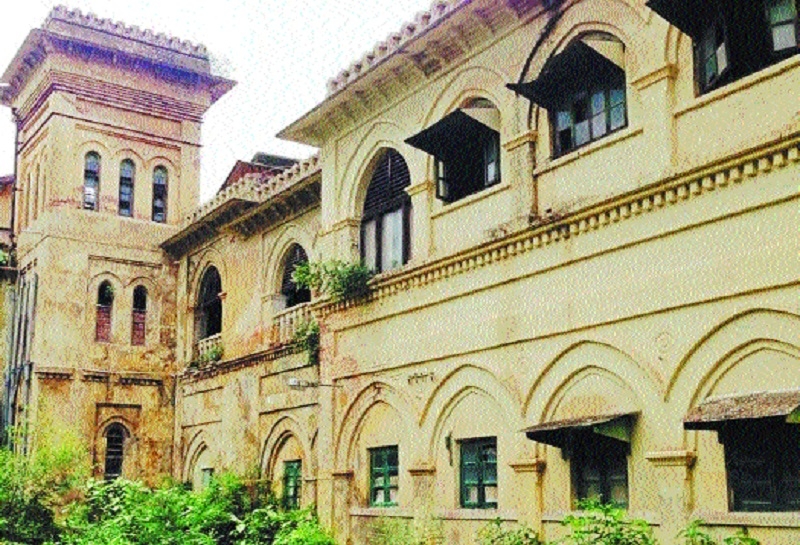Conservation of Old High Court building stuck in legal hurdles
| Date :04-Sep-2019 |

By Shirish Borkar :
THE conservation work of Old High Court Building – City’s first centrally protected ancient monument of National importance – has been severely hampered with Director General of Archaeological Survey of India (ASI), New Delhi, and ASI authorities in the city getting stuck in legal issues. After demolition of unused old canteen block within the premises of the historic building for creating additional space for parking of vehicles of lawyers and litigants visiting District Court, the ASI authorities had decided to move the Supreme Court. The block was demolished as per the order of Nagpur Bench of the Bombay High Court. ASI authorities are now challenging the HC judgement by citing provisions of Ancient Monuments & Archaeological Sites and Remains (AMASR) Act, 1958.
As per the provisions of the AMASR Act, additional construction, putting up hoardings, parking, etc are prohibited within the premises of the centrally protected monument. However, the ASI authorities would have to seek permission from Union Ministry of Culture to move the Apex Court. The Union Law Ministry, too, would be involved in the process. On March 28, 2018, Union Ministry of Culture had declared Old High Court Building as the first centrally protected heritage monument in Nagpur. It had taken two decades for Union Ministry of Culture to declare it as a monument of national importance and now it figures in the list of more than 3650 ancient monuments, archaeological sites and remains of national importance across the country. However, due to bureaucratic delay, its notification had come only after the Nagpur Bench of the Bombay High Court on March 26, 2018 ordered demolition of unused old canteen block within the premises of the historic monument within 48 hours.
It was done to create additional space for parking vehicles of lawyers and litigants visiting Nyay Mandir and Suyog building. The notification declaring the Old High Court Building as national heritage monument was issued by Usha Sharma, Director General of Archaeological Survey of India (ASI) in exercise of the power conferred on her under Sub-Section 3 of Section 4 of AMASR Act. After Government of India sanctioned funds, ASI authorities had started conservation work at the Old High Court building. Peeved over the delay on the part of ASI in handing over its land in front of Old High Court for parking vehicles of lawyers and litigants, High Court on August 7 directed Nagpur Municipal Corporation (NMC) to start work on the approach road.
The High Court asked NMC to complete the work of building a retention wall and laying paver blocks at the earliest. To meet expenditure of Rs 58 lakh and Rs 38 lakh towards construction of paver blocks and wall, respectively, the High Court allowed NMC to recover the expenses by starting pay-n-park scheme. However, the High Court did not stall the conservation work. Situated on 18,228 sq mts land, the Old High Court Building was built in Nagpur, then capital of Central Provinces & Berar in 1891-93 to house Judicial Commissioner’s Office. In 1936, when the Judicial Commissioner’s Office came to an end, the Government decided to house the High Court in the building.
After High Court moved to its new stone building in 1940, this came to be known as Old High Court Building. Representing Anglo-Indian or colonial architecture, it is a two-storeyed structure built of bricks, stones, teak and Burmese wood. The building’s thick brick wall has an arcade, verandah, arched wooden doors and Doric columns. Before the building was declared as National Heritage Monument, ASI had housed its three important branches in it. Interestingly, the Nagpur Bench of the Bombay High Court itself had directed Old High Court building’s preservation and conservation after ‘The Hitavada’ had published a hard-hitting report in 1998. The High Court bench had taken suo motu cognisance of the news report by treating it as a public interest litigation (PIL) and saved the 127-year-old marvel from demolition. Whether ASI authorities would continue the conservation work in full swing remains a billion-dollar question.